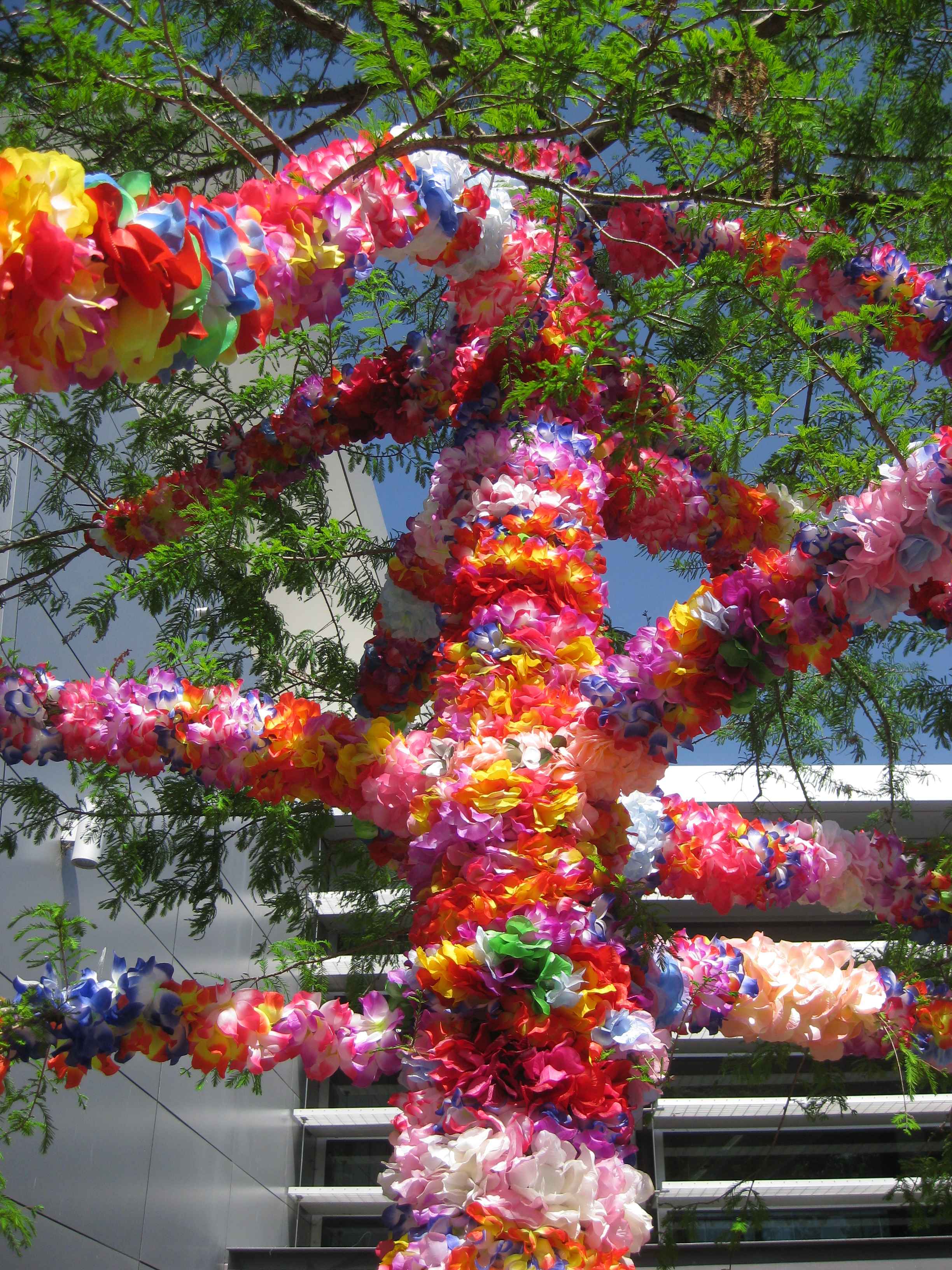Shows
“Towards the Morning Sun”


Much can be attributed to the Polynesian canvases of Paul Gauguin in establishing the myth of the Pacific Islands as a bounty of exotic idylls, where semi-naked odalisques wrapped in bold patterned pareu lounge. But even at the time of the French artist’s arrival in Tahiti in 1891, Christian missionaries had already played their part in destroying the local mythology in pursuit of religious homogeneity. At Campbelltown Arts Centre in Sydney, “Towards the Morning Sun” is currently exhibiting nine artists of Pacific heritage whose work interrogates elements of Pacific culture as mediated through the prism of Western perception. Several of these artists are among the Islands’ diaspora and here they lay claim to a traditional culture that was once their birthright or else seek to dispel some common misconceptions.

Sydney-based Niki Hastings-McFall, for example, is a second generation Samoan artist born in New Zealand who only discovered her island heritage at the age of 33. Providing a striking entrance to the exhibition, the artist has decked out a faux 1950s living room, along with a regimented cluster of standard lamps and Cypress tree in the gallery courtyard, in a livery of lei. The work references the floral garlands given as greetings in the Pacific Islands, but here the synthetic flowers offer a wry remark on the tourist kitsch that proliferates the islands. Through this work, Hastings-McFall negotiates the myth and reality of island life.

In a similar appropriation of recognizable tourist motifs, Rosanna Raymond’s video, Da SaVAge K’lub (2013)—while mired in a particularly dense theoretical framework of ta-va (time and space)—flaunts beautiful dancing Polynesian women donning exotic clothing, satirizing the European view of the Polynesian race in vivid color.
On a subtler note, Maureen Lander’s suspended diaphanous installation of painted, braided flax, which seems to float through the cavernous space, takes traditional Maori ethnological artifacts as its inspiration. Seeing these objects in Australian and New Zealand museums, the artist explores the implication that her heritage might only survive as historical remnants in a modern day cabinet of curiosities.

But if all of the artists in “Towards the Morning Sun” are caught between cultures, nowhere is this polarization more pronounced than in the work of Brett Graham who articulates the divide between Maori and European cultures in his installation Mihaia (2010), a near full-size replica of a Russian personnel carrier made from MDF intricately carved with repetitive Maori whakairo—the traditional art of carving in wood, stone or bone. Graham expresses complex political and cultural ideas with ease in strong sculptural forms, which are both aesthetically pleasing and intellectually compelling. With acute irony, he comments on his cultural identity while reckoning with the forces that threaten to destroy it.
It is assumed that by the year 3000, due to global warming and melting ice caps, several islands in the Pacific will have disappeared beneath rising sea levels. This pending apocalyptic event is the central concern for performing aritst Laitai Taumopeau from Tonga. On opening night, Taumopeau was suspended for several hours below blocks of melting ice in a performance described by curator Keren Ruki as"hauntingly disturbing." Now, in her absence, a ghostly trompe-l’oeil video of the performance with the the aritst's projected shadow is all that remains, perhaps predicting the fate of the Pacific Islands' culture itself.
Towards the Morning Sun is on view at Campbelltown Arts Centre through October 21, 2013.
Michael Young is contributing editor for ArtAsiaPacific.







